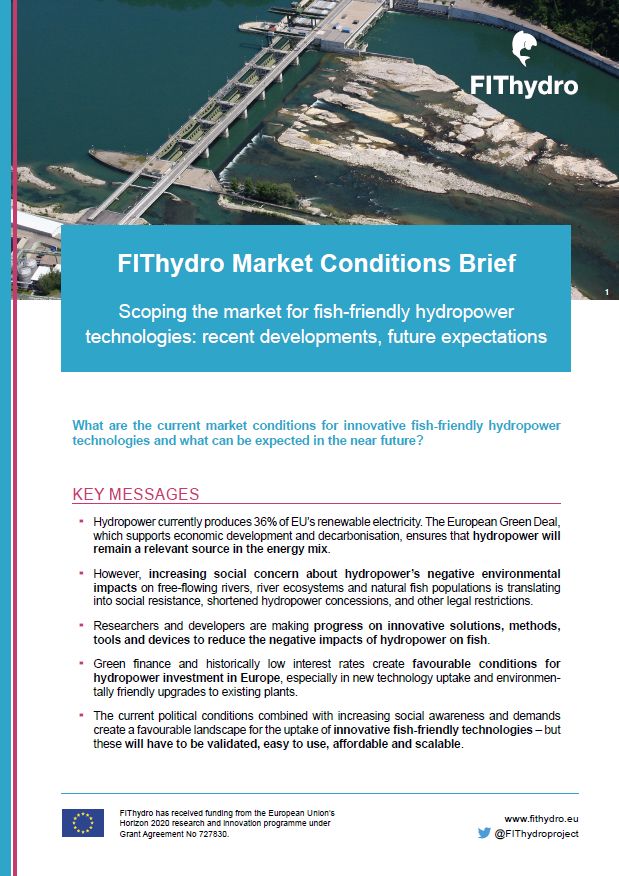Review of Policy Requirements and Financing Instruments (for fishfriendly hydropower)
Deliverable 5.1 H2020 Research project FIThydro
- Publication
- Citation
Kampa, E. Tarpey, J., Rouillard, J., Bakken, T. H., Stein, U., Godinho, F. N., Leitão, A. E., Portela, M. M., Courret, D., Sanz-Ronda, F.J., Boes, R., and A. Odelberg (2017). Technical Deliverable 5.1. Review of policy requirements and financing instruments. H2020 project FIThydro Fishfriendly Innovative Technologies for Hydropower.
This report has been prepared as part of work-package 5 of the FIThydro project on Fishfriendly Innovative Technologies for Hydropower. It aims at investigating the regulatory landscape influencing actions relevant to environmental improvements in the context of planning and operating hydropower plants. Emphasis is given to the requirements of the EU Water Framework Directive, nature protection policies and policies on renewable energy and climate change adaptation, thereby outlining opportunities, barriers and challenges in reaching multiple environmental objectives. The report is available for download.
At first, the report outlines key relevant European-level policies. Subsequently, the report focuses on national policies in eight European countries in the four regions (Scandinavia, Alpine, Iberian peninsula and France/Belgium) where FIThydro test sites are located. On this national level of analysis, the key legal requirements for environmental improvements related to existing and new hydropower plants are outlined, as well as relevant aspects in the permitting process. In addition, the report reviews the use of financing instruments to support and sustain ecologically compatible hydropower production.
Hydropower is considered to be a reliable and cost effective renewable energy source. It can make an important contribution to the reduction of CO2 emissions in Europe within current climate protection and renewable energy policy. At the same time, the construction and operation of hydropower plants is generally linked to impacts on water ecosystems. The major impacts of hydropower plants in river basins include barriers to fish migration, damage and mortality of fish species, modified flows and habitat conditions, changes in nutrient and physico-chemical conditions, as well as changed sediment patterns.







